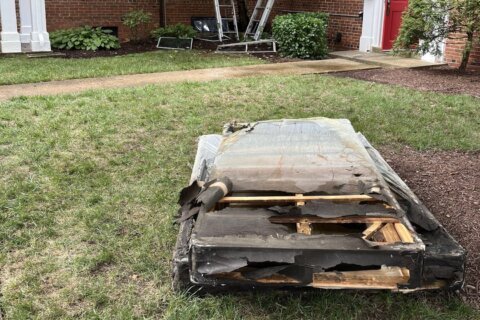Just as athletes may take note of a rivalry game in their hometown before the season starts, some workers at Capital One Arena in downtown D.C. do the same, but for a completely different reason.
Darius Dunn, the assistant general manager of arena operations at Capital One Arena, said some workers take note when the arena has several different events on back-to-back days. Last month, he said, the arena had what he called a “bucket list item” — hosting five different concerts in five days.
And it’s currently in the middle of another busy stretch.
Capital One Arena is hosting nine games in nine days, a mark that started Nov. 17 and is scheduled to end on Saturday. Over that span, the venue is scheduled to host three Capitals games, three Wizards games and three Georgetown basketball games.
It also includes two doubleheaders — a Georgetown and Capitals game on Nov. 18 and Georgetown and Wizards basketball games on Saturday, Nov. 25.
In total, the arena estimates it will host over 100,000 visitors over the nine-day period.
“It’s a work of art when you see the behind-the-scenes peek behind the curtain, so to speak, of what goes on. Primarily overnight, but a number of logistics,” Dunn said.
The number of people involved in transforming the arena between the events varies, Dunn said, but usually involves 35 to 40 members of the operations crew, and 80 to 100 people on the cleaning crew. There could be another 10 to 15 people who are the “AV, IT and mechanical folks,” he said.
There are some nuances that go into switching between basketball courts, Dunn said, because there are three different variations for Wizards games and one court for Georgetown events.
Dunn said the changes highlight “a lot of moving parts” because seating and other arena configurations are different. It’s a process that sometimes starts as late as 11 p.m. or midnight, once a concert or sporting event ends, concluding at 5 or 6 a.m.
A “basketball footprint sits inside the dasher of a hockey rink. And so there (is) some additional flooring that goes down on top of the ice, an insulated floor, that’s what the basketball court sits on top of,” Dunn said.
When the arena transitions from basketball to hockey, there’s protective netting and glass that also has to be put in place.
“You leave at 11:00 and come back (at) eight in the morning, and it’s a totally different look and configuration from one night to the next,” he said.
When Capital One Arena hosts two events on the same day, Dunn said, extra staff are sometimes called in to help so the switch gets done faster. In those instances, a process that takes six hours overnight takes only about two and a half.
“We kind of move into the fast lane and push the envelope in terms of flipping it over,” Dunn said.
People who linger after the first event on days of doubleheaders could sometimes see forklifts, crews picking up or putting down the basketball court, “probably 175-pound pieces of panel, goes together like a puzzle, with 15 rows” for each court, Dunn said. Then, the TV crew starts to set up.
“National holidays and sporting events kind of go hand in hand,” Dunn said. “When [the public is] home eating turkey for Thanksgiving and watching the NFL, there’s a group of industry professionals that are working that game, and Christmas with NBA, and New Year’s Eve with baseball and college football.
“The role we play, we take pride in that,” he said.








